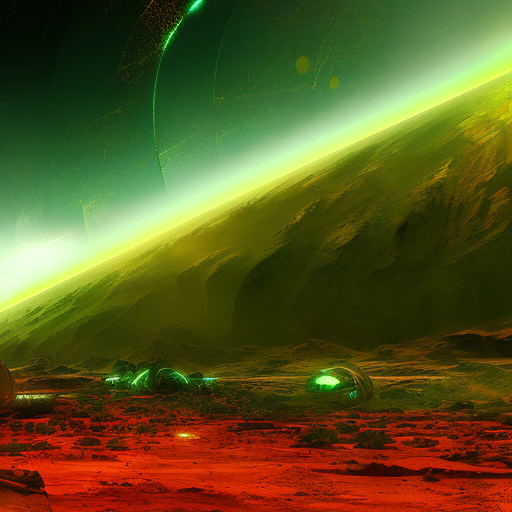One-line summary:
In “Green Mars,” the second book in Kim Stanley Robinson’s Mars Trilogy, the story continues as the terraforming of Mars progresses, exploring the complex political, social, and environmental challenges faced by the colonists.
Exploring the Terraforming Process
“Green Mars” delves deeper into the ongoing transformation of Mars from a barren planet to a habitable one. The narrative follows the lives of the original colonists and their descendants, who are determined to make Mars a sustainable home for humanity. The book explores the intricate details of the terraforming process, including the introduction of genetically modified organisms, the melting of the polar ice caps, and the creation of an atmosphere. As the planet gradually becomes greener and more hospitable, the colonists face numerous obstacles and ethical dilemmas.
Political Struggles and Ideological Differences
Amidst the scientific challenges, “Green Mars” also delves into the political struggles that arise as different factions vie for control over the future of Mars. The story highlights the ideological differences between the Reds, who advocate for a more egalitarian society, and the Greens, who prioritize the preservation of the Martian environment. These conflicting visions lead to intense debates and power struggles, with each faction trying to shape the planet’s destiny according to their beliefs. The book explores themes of power, governance, and the complexities of building a new society from scratch.
Environmental Ethics and Human Interactions
As the terraforming progresses, “Green Mars” raises important questions about the relationship between humans and their environment. The colonists must grapple with the ethical implications of transforming an entire planet, including the potential extinction of native Martian life. The book explores the delicate balance between human needs and the preservation of ecosystems, highlighting the challenges of reconciling progress with environmental responsibility. It also delves into the psychological and emotional impact of living in a radically different environment, as the colonists struggle to adapt to the new Martian landscape.
Key Takeaways:
- The process of terraforming Mars is a complex and multifaceted endeavor, involving scientific, political, and ethical challenges.
- Political ideologies and power struggles can shape the future of a society, even in the context of colonizing a new planet.
- The preservation of the environment and the well-being of indigenous life forms are important considerations in any large-scale transformation project.
“Mars was empty before we came. It’s a blank slate. We’re writing the future of the solar system.”
– Kim Stanley Robinson, Green Mars
In “Green Mars,” Kim Stanley Robinson continues to captivate readers with his intricate exploration of the terraforming process and the challenges faced by the colonists on Mars. The book delves into the political struggles and ideological differences that arise as different factions vie for control over the planet’s future. It also raises important questions about environmental ethics and the delicate balance between human progress and ecological preservation. Through its thought-provoking narrative, “Green Mars” reminds us of the complexities involved in shaping a new world and the importance of considering the long-term consequences of our actions.












